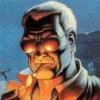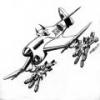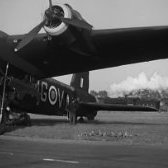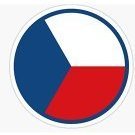-
Posts
544 -
Joined
-
Last visited
Profile Information
-
Gender
Male
-
Location
X
Recent Profile Visitors
3,946 profile views
Kari Lumppio's Achievements

Obsessed Member (4/9)
402
Reputation
-
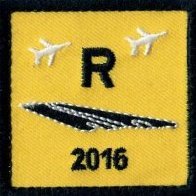
Finnish Air Force Mig -21 BIS colours
Kari Lumppio replied to billyharry2000's topic in Aircraft Cold War
Hi! Got a second opinion too (Thanks Kössi!) for the Finnish IV paint FS5595 approximations: - vihreä IVN3 FS 34102 (means that Hu 117 can be used) - ruskea IVN2 FS 30040 (Hu 10 service brown is not far away, but must be matted, (Revell 84 brown + Revell SM331 red mixed 20:1 is suggested too edit: for Soviet brown) - vaalean harmaa IVN1 FS 36440 (Hu 167 also usable, the grey is the same as FinnAF Hawk Mk 51 original underside colour) Today museum plane MiG-21 colours are not much good any more. Perhaps the MG-136 front fuselage at Tikkakoski museum would be best preserved sample for the IV paints? I think it was repainted with the real paints when turned to museum piece. By the way. All comparisons I gave are to Humbrol enamels from yesterday (like last century). Acrylic Humbrol may differ and also todays Humbrol enamels (which range does not have any more Hu 150 nor Hu 117?) Cheers, Kari -

Finnish Air Force Mig -21 BIS colours
Kari Lumppio replied to billyharry2000's topic in Aircraft Cold War
Hello again! I spent couple of hours for this as I realized Eduard has released their 1/72 MiG-21 BIS. A few overtrees should be moving towards me soon. Jyrki Laukkanen's first book MiG-21 in Finnish Air Force (two editions does exist) says about Finnish BIS colours: Of the 26 BISes 12 kept their Soviet colours to the end. 12 were painted with Finnish colours following more or less the original patterns two: MG-114 (reconnaissance version) and MG-128 were painted with Finnish paints in the "final pattern" desinged by Jyrki Laukkanen. Also the double MK-126. MG-128 was lost in accident in 1992. I do not possess any sample for the Finnish IVN 1 harmaa (grey) nor IVN 3 vihreä (green). But I do have one panel screw with matt brown which I believe to be IVN 2 ruskea (brown). Did find that from under 10 years or so layer of dust in a KP 1/72 MiG 21 MF box. I compared the screw head under natural light (through clouds) with the painted Humbrol colour charts I have (from 80's -90¨s !!) and the closest was Hu 98 chocolate. Not perhaps 100% match, but very close to my and my wife's eye (she scored 100% in one colour test). I do not have any of the high three digit Humbrol samples to compare. I also have gloss brown head MiG panel screw and it is not far from Hu 10 service brown. But the Soviet brown varied a lot between the batches. The Soviet green instead was constant and the green screw head (which I have) is closest to Hu 150 forest green (among the Humbrol green samples I have). My recollection, which photos seem to verify, is that the Finnish green was greener and Hu 105 marine green might be suitable. It is not far removed from the green screw head colour either. Finnish MiG-21 BIS undersides were grey, not blue. Hu 147 light grey Antti suggested might be good. I do not have painted sample to compare and the grey on the screw head I have is Soviet colour anyway. This is the best I can provide at the moment. Perhaps more info is coming from more knowledgeable guys. Cheers, Kari PS Managed to link (?) the "final pattern" picture. HAD decal instructions for MK-126 (double) has the right type pattern. But ignore the underside colour at least, no light blue on our MiGs. MG-114 on the sheet has the original Soviet pattern. -

Finnish Air Force Mig -21 BIS colours
Kari Lumppio replied to billyharry2000's topic in Aircraft Cold War
Hi! Antti, are you sure about the Hu 10 + black for IV ((lmavoimat) brown? It looks to be more like the almost black one could find on MG-136 for example (serial number starting with 96 instead of the more common 75). Soviet colour in any case. IIRC the Finnish (IV) brown was more red and not so dark. I do have one small wing panel piece with dark brown like straight Hu 10, but do not know from what MG it is. In any case it is Soviet colour, too. Valmet Lentokonetehdas manufactured wing root triangle plates from thicker gauge as they tended to crack in Finnish use. I have asked about this around, but no definite answers yet. Cheers, Kari -

Finnish Air Force Mig -21 BIS colours
Kari Lumppio replied to billyharry2000's topic in Aircraft Cold War
Hi! "there final scheme" This needs some clarfication. Is it meant the pattern created by test pilot Jyrki Laukkanen? The one which used Finnish paints for all colours and IIRC was painted only on two single seaters and one double? I know a guy who might be able to answer, but it will take some time. BTW the KP pattern shown is wiard, I would say it is missing blotch of colour fron the left wing and most definitely is not the correct final pattern. Hyvää juhannusta! Kari -
Hi! Whatever it is worth Finnish Air Force trained Ju 88 dive bombimg even post war. First time I have read there was problems with the StuVi. Maybe. Cheers, Kari
-
Hi! Disregarding completely the RLM numbering what I see as camouflage colour needs for Luftwaffe hiding in woods from late 1944- to end of war in May 1945: - for winter camo dark green (coniferous woods)/ grey (leafless trees, thin dirty snow cover)/ braunviolett (earth, trunks and tranches on leafless trees like birch) - for spring camo mid green (new leafs and grass) / dark green (coniferous woods). That is one way to consider the aircraft colour choices made by Germans. Cheers, Kari
-
No. The text I posted is directly from original German document. "Oberflächenschutz Do 17 (Do N 1683 Ausgabe 2)" Cheers, Kari
-
Hallo! 4./NJG 100 at Tallinn first half of 1944 is what I have been most interested of. Also the 5./NJG 200 (radarless planes AFAIK) which was there before. https://www.ww2.dk/air/njagd/njg100.htm https://www.ww2.dk/air/njagd/njg200.html 4./100 was led by two-three ground radars. Celebes II and III among othets. https://gyges.dk/Flum and Jagd.htm has map of NE Europe Lw radar sites and lots of other goodies The radars were on train (initially?) but stayed on same locations for long periods. Laterr in Spring 1944 radar ship Togo appeared into Gulf of Finland. There is German book about the ship, google it. There is more, but my lunch break is over now. Cheers, Kari
-
Tere! This book by Toivo Kitvel: https://www.vanaraamat.ee/Frederik_Gerdessen_Toivo_Kitvel_Johannes_Tilk_Aeg_mehed_lennukid_Eesti_lennunduse_are_39360-20.htm BTW its used book shop link. Has list of pre-war Õhuvägi aircrafts and their engines. Avro 505R, numbers 104-115, had Mongoose II. Blue Rider booklet is second class source compared to Kitvel's books, for example. Even if they most definetely are not meant for modellers. Try Estonian photo archive to find Avro 504R photos. IIRC there are several: https://www.ra.ee/fotis/index.php/en "avro" might work for search word. "lennuk" (aircraft), too but much chaff to weed. Cheers, Kari
-
Could be Vaisala T.h.m.40 sight. Similar but not same as ReVi 3. Not near my books so cannot check right now. Cheers, Kari
-

RAF Doped Fabric Battle Damage Repair Question
Kari Lumppio replied to 11bravo's topic in Aircraft WWII
Hi! A question triggered by this thread: Did Spitfire have SRM, Structural Repair Manual? Such document would have the definitive answer(s). Cheers, Kari -
Hi! Finnish AF Mk 51A (7 planes) have the faired vent , the earlier Mk 51s not. Is the vent related to the wing type (mod 999?) as the 51As did come with the new wing with three strakes. Mk 66s, don't know. Kari
-

Question about RAF Mustang IIIs (P-51B) in natural metal
Kari Lumppio replied to Phantome's topic in Aircraft WWII
Hi! De-icing paste (kilfrost) would make more sense. December-January perod also points to that direction. Cheers, Kari -

Question about Yakovlev Yak-52 colours
Kari Lumppio replied to Tiger331's topic in Aircraft Cold War
Tere! The Jak-52 may have been overhauled? All Yak-52 individiuals I have seen and flown (one solo flight at Nurmsi) have been white and red. If overhauled in Lithuania company Termikas might know something? http://www.termikas.com/aircraft/YAK-52/YAK-52.html The "remont" shops painted their logo on planes too, at least I have seen such on DOSAAF Wilgas. No photos unfortunately. I have been latently searching the beige post-war soviet colour, too. There is a particulart Estonian civilian registerd An-2 I would like to model some day. Cheers, Kari -
Hi! Stalling tests on a Blenheim A.R.C Technical Report R. & M. No 1966 (December 1939) https://reports.aerade.cranfield.ac.uk/bitstream/handle/1826.2/1443/arc-rm-1966.pdf?sequence=1&isAllowed=y The above may be interesting reading about Blenheim stalling characteristics. It says: "The favourable effect of opening the engine gills is due to their increasing the root turbulence." The wedge would give the same effect with less drag? Cheers, Kari




